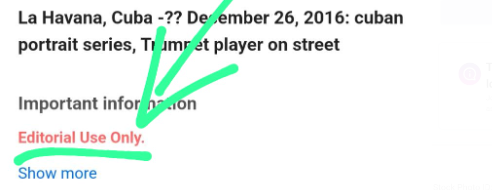As a graphic designer, you're undoubtedly aware of images' critical role in enhancing the visual appeal and message of your design projects. However, it's crucial to understand the distinction between editorial and commercial images when sourcing images. Each type serves a unique purpose and is subject to different usage rights and restrictions. This article delves into the differences between editorial and commercial images and provides a comprehensive list of scenarios where editorial images should be used exclusively.
Editorial Images vs. Commercial Images - The Basics
You can't use editorial images for commercial use because they are intended for different purposes and have additional legal and ethical considerations.
Editorial Images
Editorial images are meant to provide accurate and factual representations of events, people, and places. They are commonly used in news articles, educational materials, documentaries, and non-fiction content. Since these images capture real-life situations without staged elements, they are used to inform and tell stories in an unbiased way. Editorial images often feature recognizable individuals, landmarks, and situations and come with limited usage rights.
Commercial Use
On the other hand, commercial images are created to promote or sell products, services, brands, or concepts. These images often involve staged scenes, models, and specific compositions to make things appealing and enticing. To use commercial images, you usually need permission from the people depicted in the image (through model releases) and the owners of any recognizable property (through property releases).
Why You Can't Use Editorial Images for Commercial Use:
Using editorial images for commercial purposes would be misleading and unethical. Editorial images capture real moments as they are and were not taken to endorse products or make them look more appealing. Using editorial images for commercial purposes could mislead consumers and create a false impression that the people, places, or events in the photos endorse your product, even if they are not.
Additionally, using editorial images for commercial purposes without proper permissions could lead to legal issues, as you might not have the necessary rights to use the likenesses of individuals or recognizable properties for commercial gain
Editorial Images vs. Commercial Images - The Basics
You can't use editorial images for commercial use because they are intended for different purposes and have additional legal and ethical considerations.
Editorial Images
Editorial images are meant to provide accurate and factual representations of events, people, and places. They are commonly used in news articles, educational materials, documentaries, and non-fiction content. Since these images capture real-life situations without staged elements, they are used to inform and tell stories in an unbiased way. Editorial images often feature recognizable individuals, landmarks, and situations and come with limited usage rights.
Commercial Use
On the other hand, commercial images are created to promote or sell products, services, brands, or concepts. These images often involve staged scenes, models, and specific compositions to make things appealing and enticing. To use commercial images, you usually need permission from the people depicted in the image (through model releases) and the owners of any recognizable property (through property releases).
Why You Can't Use Editorial Images for Commercial Use:
Using editorial images for commercial purposes would be misleading and unethical. Editorial images capture real moments as they are and were not taken to endorse products or make them look more appealing. Using editorial images for commercial purposes could mislead consumers and create a false impression that the people, places, or events in the photos endorse your product, even if they are not.
Additionally, using editorial images for commercial purposes without proper permissions could lead to legal issues, as you might not have the necessary rights to use the likenesses of individuals or recognizable properties for commercial gain
.
It's essential to remember that even though editorial images offer more flexibility regarding usage rights, they should never be used for commercial purposes. Misusing editorial images in commercial contexts could lead to legal consequences.
An example:
An example:
The following example shows a man playing the trumpet - one is a photo of a random musician on the street, and the second image is of a model that signed on a "Release" document saying his image is ok for commercial use.
Example of Editorial use only image:
Example of Editorial use only image:
Example of Commercial use image:
In summary, learning and reading more about the purpose and rights associated with different types of images is essential. Use editorial images for informative and factual content, and opt for commercial images to promote or sell products and services.
